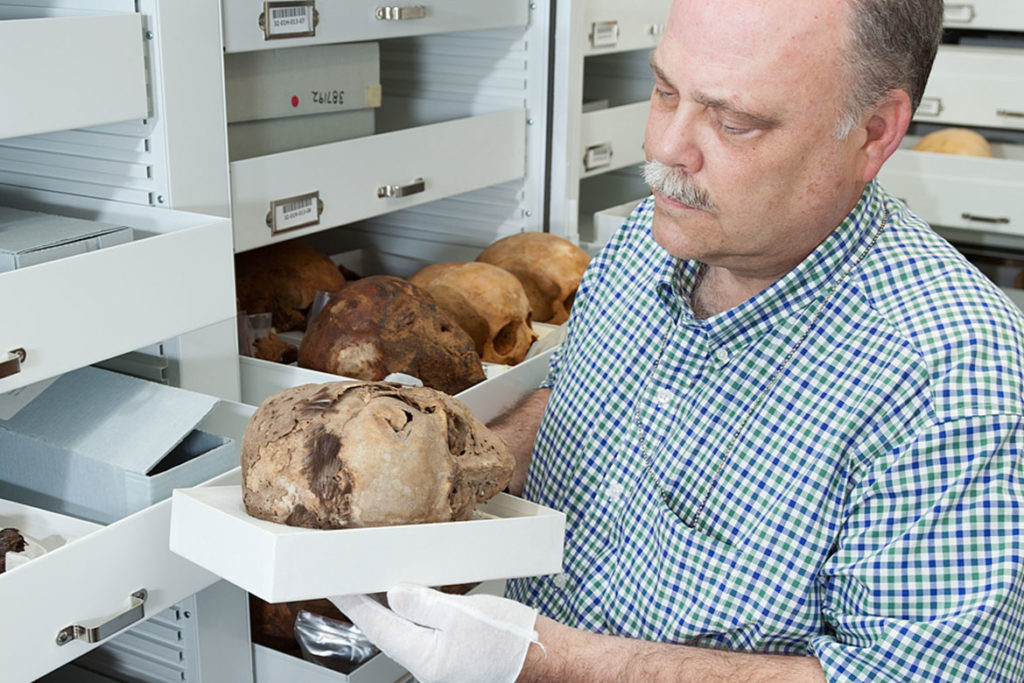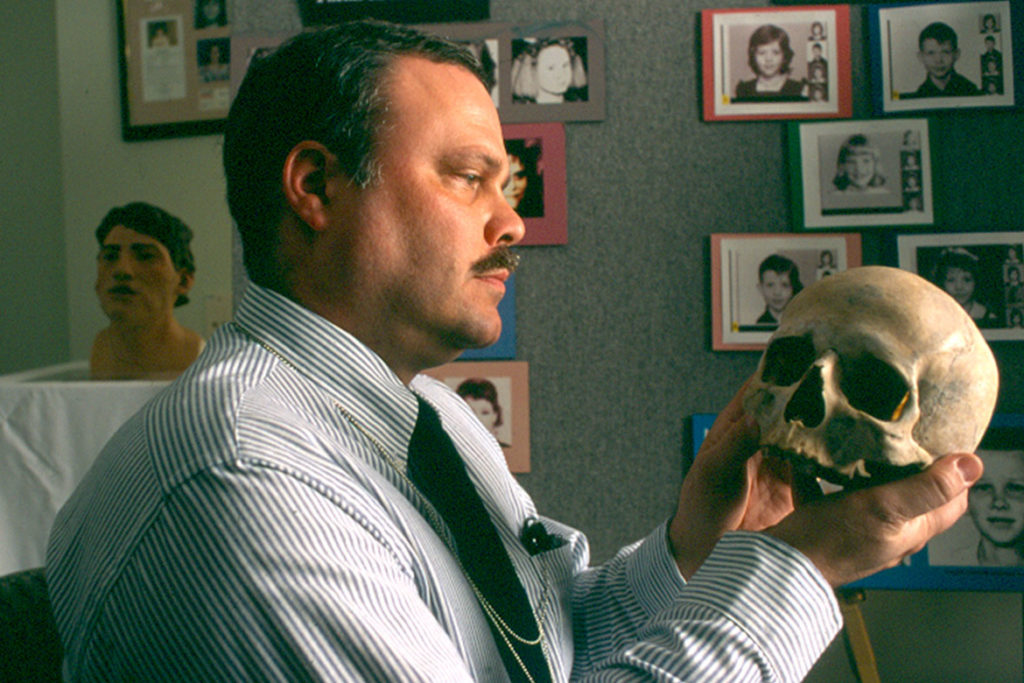David Hunt (’83 & ’89) remembers visiting the Dickson Mounds State Museum, not far from his home in Washington, Illinois, as early as age six and being fascinated by the skeletons that had been excavated—some of them with arrow points still in them.
As an undergraduate at the University of Illinois, his interest in anatomy and classical archaeology led him to human skeletal biology. His advisor, Linda Klepinger, had been a graduate student at the University of Kansas when Bill Bass was in the anthropology department there, and she recommended that Hunt think about UT for his graduate work. “I came to UT in 1980 when the decay-rate facility was getting off the ground,” says Hunt, who is now the collections manager for physical anthropology at the Smithsonian Institution. “So I was able to be there in the beginning stages of the facility.”

Hunt was not Bass’s primary research assistant, but he helped whenever there was a need for multiple people to do the research work. “It was a unique learning experience every time you got to go out on a forensic or archeological case with Bill,” says Hunt.
He recalls being on one case investigating a house that had burned. “The person who set the fire was trying to get rid of the body of the person who lived in the house. The perpetrator worked at the quarry. He blew up the body with a stick of dynamite from the quarry to make it look like the water heater had exploded, but the torso was still present, and a lead bullet was found in it.”
Hunt remembers Bass as rigorous with student forensic investigation reports. “If a report was not right, he’d toss it back to you and say, ‘Do it again,’ and he’d remind you, ‘Remember, this will be a legal document.’” On his way to his master’s and PhD degrees, Hunt sang in the Concert Choir and was a paid soloist at Second Presbyterian Church, where he would see Bill and Ann Bass.

At the Smithsonian, where he’s worked since 1990, Hunt takes care of all the human skeletal materials—some 33,000 catalog records from all over the world. He helped Douglas Owsley (’75 & ’78), head of physical anthropology at the Smithsonian Museum of Natural History, and UT professor emeritus Richard Jantz in their study of the Kennewick Man—one of the oldest, most complete skeletons ever found in North America.
Hunt is the on-call forensic anthropologist for the Virginia Northern District Chief Medical Examiner’s Office and for the National Center for Missing and Exploited Children. He had also been the on-call forensic anthropologist for the District of Columbia Medical Examiner’s Office until a few years ago.
“I didn’t necessarily envision that I would end up in museum and curatorial work,” says Hunt. “But it was a fortunate opportunity that when a job at the Smithsonian was available, my varied experience in skeletal biology, collections management, object conservation, and forensic anthropology allowed me to be selected for the position.”

